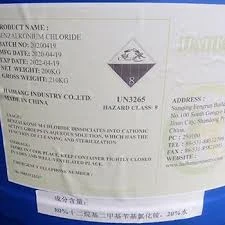polyacrylamide polymer
Understanding Polyacrylamide Polymer Applications and Benefits
Polyacrylamide is a synthetic polymer that has garnered significant attention in various fields due to its unique properties and versatile applications. It is formed through the polymerization of acrylamide monomers, resulting in a substance that can appear in several forms, including powder and gel. Polyacrylamide is known for its ability to absorb water and form hydrogels, making it especially useful in applications that require moisture retention or improved soil structure.
One of the most prominent uses of polyacrylamide is in the field of water treatment. The polymer functions as a flocculant, helping to bind together small particles and suspended solids in water. This process leads to the formation of larger aggregates, or flocs, which can then be easily removed from the water during treatment processes. By improving the efficiency of sedimentation and filtration, polyacrylamide contributes to cleaner drinking water and reduces the environmental impact of industrial wastewater.
In addition to its water treatment applications, polyacrylamide is also widely used in the agricultural sector. As a soil conditioner, it enhances water absorption and retention, leading to improved crop yields, especially in arid regions. By creating a stable structure in the soil, polyacrylamide minimizes erosion and nutrient runoff, ensuring that farmers can achieve sustainable agricultural practices. This characteristic is particularly beneficial in areas facing challenges related to water scarcity and soil degradation.
Moreover, polyacrylamide is employed in the oil and gas industry during enhanced oil recovery (EOR) processes. The polymer is utilized to improve the viscosity of water injected into oil reservoirs, thereby facilitating better displacement of oil towards production wells. This application not only increases oil recovery rates but also optimizes resource extraction, making it a key component in meeting global energy demands.
polyacrylamide polymer

In the biomedical field, polyacrylamide is used extensively in gel electrophoresis, a technique crucial for separating biomolecules such as proteins and nucleic acids. The ability of polyacrylamide gels to form dense matrices allows researchers to accurately analyze molecular size and charge, making it an indispensable tool in molecular biology and biochemistry laboratories.
Despite its many benefits, there are important considerations regarding the safety and environmental impact of polyacrylamide. The concerns primarily arise from the potential toxicity of residual acrylamide monomers if not completely polymerized. Consequently, stringent regulations and standards have been established to ensure that polyacrylamide products comply with safety requirements. Manufacturers are continuously researching and adopting methods to minimize residual acrylamide content, further enhancing the safety profile of polyacrylamide applications.
Additionally, there is ongoing research into biodegradable alternatives to polyacrylamide, driven by the need for environmentally friendly solutions. Scientists are exploring ways to develop polymers that can provide similar benefits without long-term environmental repercussions. This pursuit reflects a broader trend in materials science toward sustainable practices and reduces reliance on synthetic substances.
In conclusion, polyacrylamide is a multifaceted polymer that plays a critical role across various industries, from water treatment and agriculture to oil recovery and biomedicine. Its unique properties, such as water absorption, and ability to form stable gels underscore its importance in enhancing performance and efficiency in numerous applications. As research and development continue, the focus on safety and sustainability will likely shape the future of polyacrylamide and its derivatives. As we move forward, finding a balance between utilization and environmental stewardship will be essential for maximizing the benefits of this versatile polymer.
-
Understanding Polycarboxylic Acids: Properties, Applications, and Future PotentialNewsJul.28,2025
-
Scale Inhibitor Explained: How to Protect Your System from Limescale and Hard Water DamageNewsJul.28,2025
-
Scale and Corrosion Inhibitors: Essential Chemicals for Industrial Water System ProtectionNewsJul.28,2025
-
Polyaspartic Acid: A Biodegradable Polymer for Sustainable ChemistryNewsJul.28,2025
-
Isothiazolinones: A Versatile Antimicrobial Class with Industrial Power and Regulatory ChallengesNewsJul.28,2025
-
A Deep Dive into 2-Phosphonobutane-1,2,4-Tricarboxylic Acid (PBTC)NewsJul.28,2025





